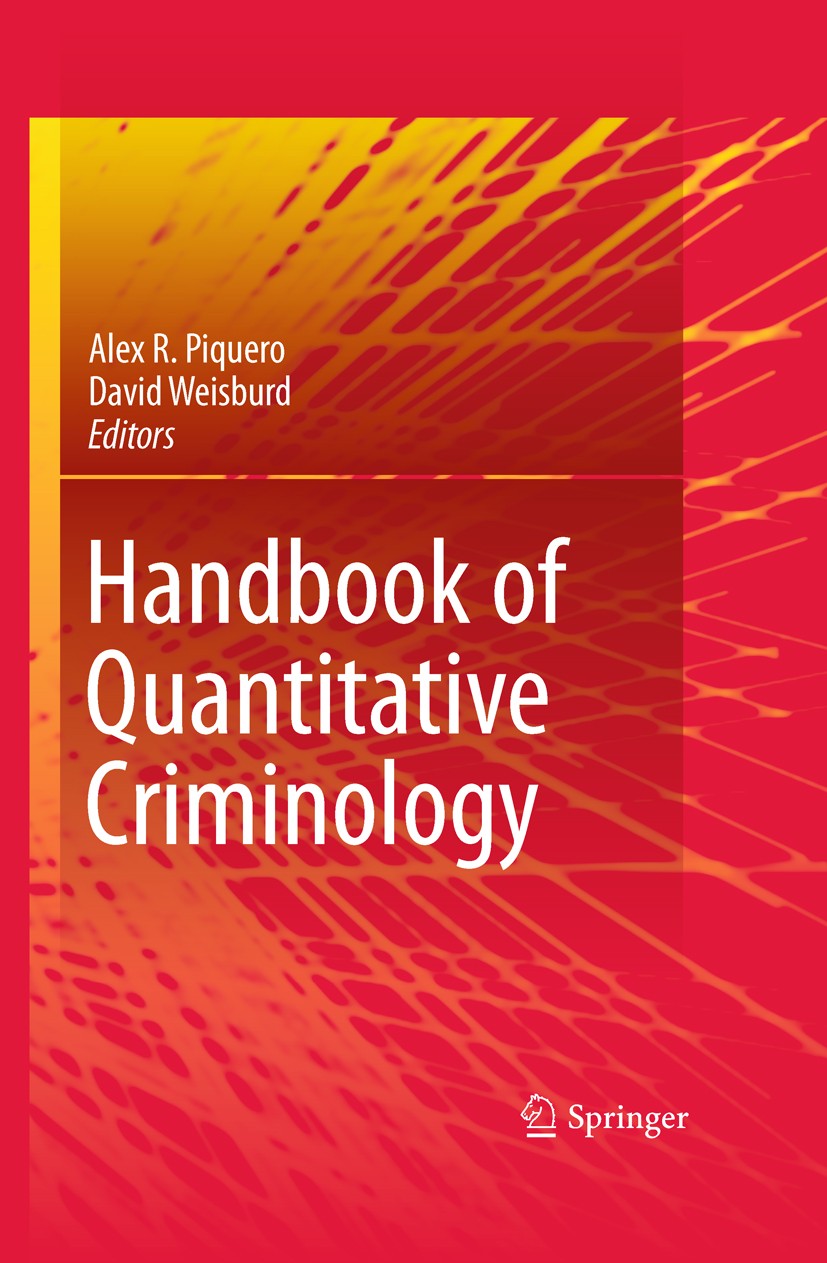| 书目名称 | Handbook of Quantitative Criminology | | 编辑 | Alex R. Piquero,David Weisburd | | 视频video | http://file.papertrans.cn/423/422043/422043.mp4 | | 概述 | Will serve as the ‘go-to‘ book for students, faculty, and researchers alike working in criminology/criminal justice.An important and much needed contribution to the field.Provides comprehensive covera | | 图书封面 |  | | 描述 | Quantitative criminology has certainly come a long way since I was ?rst introduced to a largely qualitative criminology some 40 years ago, when I was recruited to lead a task force on science and technology for the President’s Commission on Law Enforcement and Administration of Justice. At that time, criminology was a very limited activity, depending almost exclusively on the Uniform Crime Reports (UCR) initiated by the FBI in 1929 for measurement of crime based on victim reports to the police and on police arrests. A ty- cal mode of analysis was simple bivariate correlation. Marvin Wolfgang and colleagues were makingan importantadvancebytrackinglongitudinaldata onarrestsin Philadelphia,an in- vation that was widely appreciated. And the ?eld was very small: I remember attending my ?rst meeting of the American Society of Criminology in about 1968 in an anteroom at New York University; there were about 25–30 people in attendance, mostly sociologists with a few lawyers thrown in. That Society today has over 3,000 members, mostly now drawn from criminology which has established its own clear identity, but augmented by a wide variety of disciplines that include statisticians, economists | | 出版日期 | Textbook 2010 | | 关键词 | Crime; Crime Mapping; Criminal Behavior; Criminal Justice; Criminology; Criminology Methods; Criminology S | | 版次 | 1 | | doi | https://doi.org/10.1007/978-0-387-77650-7 | | isbn_softcover | 978-1-4614-1388-2 | | isbn_ebook | 978-0-387-77650-7 | | copyright | Springer Science+Business Media, LLC 2010 |
The information of publication is updating

|
|
 |Archiver|手机版|小黑屋|
派博传思国际
( 京公网安备110108008328)
GMT+8, 2025-11-15 02:02
|Archiver|手机版|小黑屋|
派博传思国际
( 京公网安备110108008328)
GMT+8, 2025-11-15 02:02


